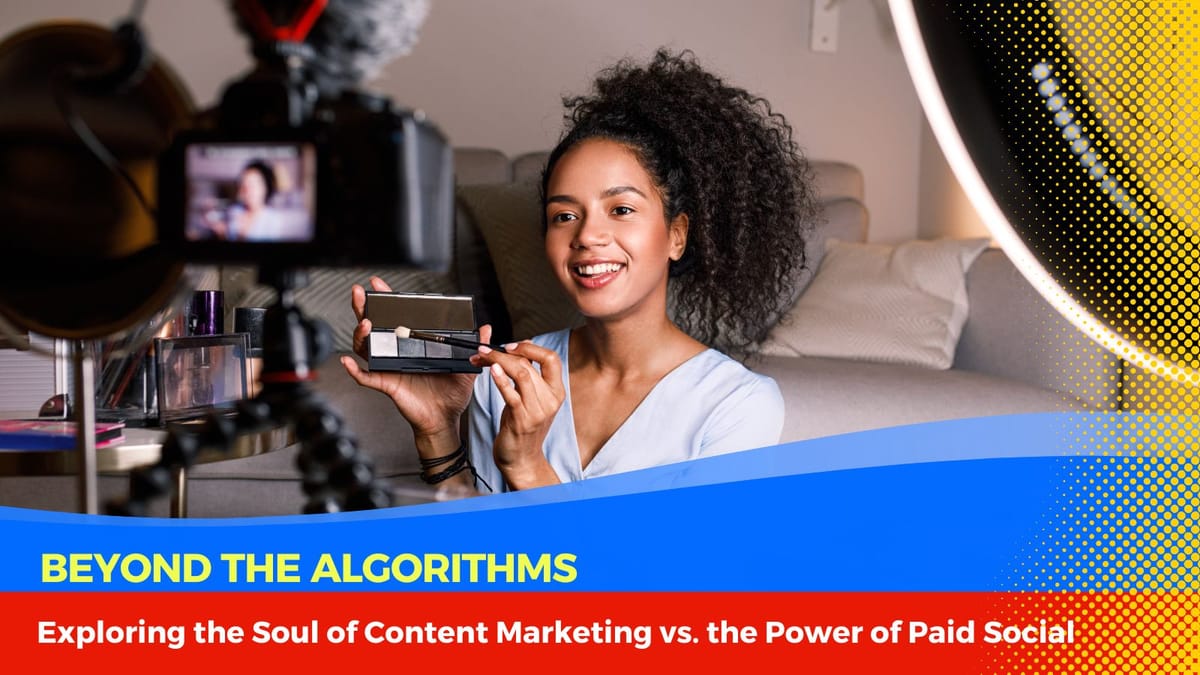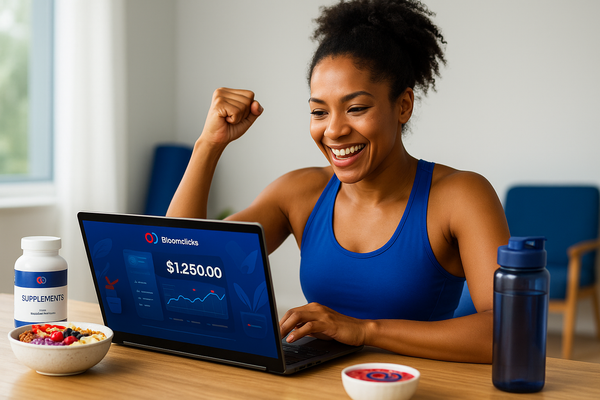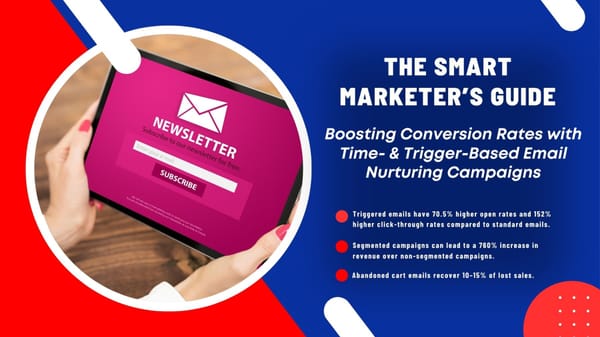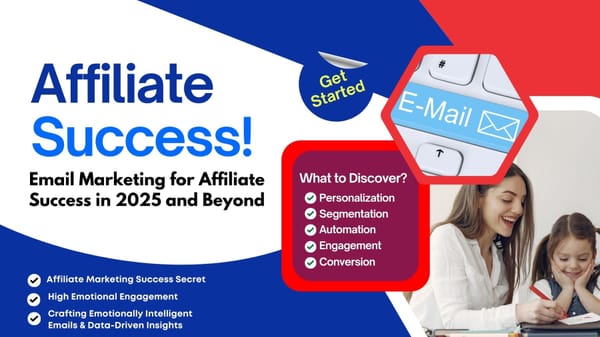Beyond the Algorithms: Exploring the Soul of Content Marketing vs. the Power of Paid Social
Dive into the heart of content marketing as we unravel its essence beyond mere algorithms. Explore the soulful connection it creates versus the sheer force of paid social strategies. Discover the true power behind authentic engagement and the art of storytelling in today's digital landscape.

Table of Content
- 1. What is Content Marketing?
- 1.1 Definition and Overview
- 1.2 Key Strategies in Content Marketing
- 1.3 Benefits of Content Marketing with Bloomclicks
- 2. What is Paid Social Media?
- 2.1 Definition and Overview
- 2.2 Key Types of Paid Social Media Advertisements
- 2.3 Advantages of Paid Social Media
- 3. Comparing Content Marketing and Paid Social Media
- 3.1 Key Differences in Strategy and Approach
- 3.2 When to Use Each Method
- 3.3 Impact on Businesses and ROI
Wondering how to choose between content marketing and paid social media for your business growth? This article explores the difference between content marketing and paid social media, laying out their definitions, strategies, and benefits to help you make informed decisions for your marketing efforts. Whether it's about building long-term brand awareness or getting quick, targeted reach, understanding these methods is crucial.
1. What is Content Marketing?
1.1 Definition and Overview
Content marketing is a strategic approach focused on creating and distributing valuable, relevant, and consistent content to attract and retain a clearly-defined audience — and, ultimately, to drive profitable customer action. Unlike traditional advertising, content marketing involves informing and engaging potential customers through articles, blog posts, videos, and other media, aiming to establish expertise, enhance brand awareness, and keep your business at the forefront of consumers' minds.
According to Content Marketing Institute, 91% of B2B marketers use content marketing to reach their customers. This statistic underscores the critical role content marketing plays in today’s digital landscape, driving engagement, boosting website traffic, and increasing brand visibility. With content being king, businesses leverage this strategy to deliver information that solves problems, educates, and entertains, creating a loyal customer base over time.
1.2 Key Strategies in Content Marketing
A successful content marketing campaign hinges on several key strategies:
- Understanding Your Audience: Before you create content, it’s crucial to know who you’re creating it for. This involves creating buyer personas, understanding customer pain points, and identifying their preferred content consumption platforms.
- Content Creation and Distribution: Quality and relevance are paramount. Your content needs to stand out and provide value. Diversify your content types to include blog posts, infographics, videos, and podcasts to cater to different preferences. Additionally, your distribution channels — be it your website, social media, email, or partnership platforms like Bloomclicks — should align with where your target audience spends their time.
- SEO Best Practices: Incorporating Search Engine Optimisation (SEO) strategies ensures your content is discoverable. Using the right keywords, crafting engaging meta descriptions, and optimising for mobile are just the basics to get your content seen by more people.
- Measuring Success: Utilise analytics to track engagement, conversion rates, and overall performance. Tools like Google Analytics and social media insights provide valuable data to refine your strategy over time.
Pro-tip: Diversify your content types and distribution channels for maximum reach and engagement.
1.3 Benefits of Content Marketing with Bloomclicks
Partnering with an experienced content marketing network like Bloomclicks can amplify the benefits of content marketing, offering:
- Greater Audience Reach: Leveraging Bloomclicks’ extensive network can introduce your brand to new audiences across different platforms and regions.
- High Converting Content Solutions: From crafting engaging blog posts to producing persuasive sales content, Bloomclicks specialises in creating content that resonates with your target audience and drives conversions.
- Professional Services: Bloomclicks offers a suite of content marketing services, including SEO, web development, and video production, to ensure your content not only reaches its intended audience but also prompts action, boosting traffic and sales.
Content marketing is not just about flooding the internet with any content; it’s about creating the right content that informs, engages, and converts. With a strategic approach and the right partner, your content marketing efforts can result in sustained business growth and a strong online presence.

2. What is Paid Social Media?
2.1 Definition and Overview
Paid social media refers to the process of advertising your products, services, or brand directly through social media platforms by paying for ad placements. These ads can target specific demographics, interests, behaviours, and more, ensuring your message reaches the most relevant audience. Unlike organic social media marketing, where your content's reach is determined by algorithms and unpaid sharing, paid social media promotes your content to a broader or more targeted audience for a fee.
The evolution of social media platforms into advertising powerhouses allows businesses of all sizes to achieve remarkable visibility. Platforms like Facebook, Instagram, LinkedIn, and Twitter offer various advertising formats, including but not limited to, sponsored posts, display ads, and interactive ads, extending your digital footprint. You're not just buying space; you're buying access to a precisely curated audience, selected based on the rich user data these platforms collect.
2.2 Key Types of Paid Social Media Advertisements
Understanding the different types of paid social media advertisements is crucial to leveraging their potential. Here are the key types:
Sponsored Content: These are posts that look like regular updates but are labelled as sponsored. They blend seamlessly into the user's feed, offering high engagement rates.
Display Ads: Often found in the sidebar or at the top of social media platforms, display ads are perfect for building brand awareness with eye-catching visuals.
Video Ads: With the increasing consumption of video content, video ads offer a dynamic way to engage users, often resulting in higher engagement than static ads.
Carousel Ads: These ads allow multiple images or videos in a single ad, providing a richer storytelling experience that can showcase various products, features, or brand stories in one go.
Lead Generation Ads: Specifically designed to collect lead information such as email addresses, these ads are integrated with call-to-action buttons like "Sign up" or "Download," making them highly effective for direct marketing campaigns.
Each type of ad serves different purposes and choosing the right mix can elevate your marketing strategy to new heights. Experimentation and analytics are key to understanding which formats resonate most with your audience.
2.3 Advantages of Paid Social Media
The advantages of investing in paid social media are plentiful. Firstly, immediate visibility is a game-changer for brands aiming to increase their online presence rapidly. Unlike organic growth, which can be slow and unpredictable, paid ads offer a direct pathway to enhanced visibility, essential for launching new products or promotional campaigns.
A significant benefit is the targeted reach. Social media platforms possess vast amounts of user data, allowing advertisers to pinpoint their exact audience based on demographics, interests, behaviours, and even previous online activities. This precision ensures your advertising budget is spent on reaching those most likely to be interested in your products or services, maximising the return on investment (ROI).
Moreover, flexibility and control over campaigns are unparalleled. Advertisers can start, stop, or adjust campaigns in real-time, reacting swiftly to market trends or performance metrics. This level of control, combined with detailed analytics provided by platforms, empowers businesses to optimise campaigns for the best results constantly.
Lastly, incorporating paid social media into your overall marketing strategy can complement and amplify other marketing efforts, such as content marketing or SEO campaigns. A well-rounded strategy that includes both paid and organic initiatives can drive both immediate traffic spikes and long-term growth, offering the best of both worlds.
Pro-tip: Integrating tools and strategies from platforms like Bloomclicks can further enhance your paid social media efforts. By leveraging detailed analytics and strategic insights, you can refine your campaigns for maximum impact, ensuring your paid social media investment delivers the desired results.
3. Comparing Content Marketing and Paid Social Media
3.1 Key Differences in Strategy and Approach
Content marketing and paid social media have distinct roles in a digital marketing strategy. At its core, content marketing is about creating and distributing valuable, relevant, and consistent content to attract and retain a clearly defined audience. This method aims to establish expertise, promote brand awareness, and keep your business top of mind for when the consumer is ready to make a purchase. It's a long-term strategy focused on building a strong relationship with your target audience, giving them high-quality content that is very relevant to their needs and interests.
On the other hand, paid social media is a more direct approach. It involves paying social media platforms to display adverts or sponsored messages to a specific audience, based on demographic and psychographic segmentation. This tactic is capable of generating immediate results and is often used for specific campaign goals such as product launches, promotions, and lead generation. The targeting capabilities on platforms like Facebook and Instagram allow for laser-focused campaigns that can reach potential customers based on very specific criteria.
3.2 When to Use Each Method
Deciding when to use content marketing or paid social media can largely depend on your marketing goals, budget, and timeline.
Use content marketing when you're aiming to build long-term relationships with your audience, improve brand recall, and establish thought leadership. Content marketing is highly effective for businesses that want to earn their audience's trust by providing them with value through high-quality content. For example, a B2B company might use in-depth blog posts, case studies, and whitepapers to demonstrate industry expertise.
Opt for paid social media if you're looking for immediate visibility and quicker results. It's especially useful for time-sensitive offers, reaching out to new markets, or testing new products. Paid campaigns can offer immediate metrics about their performance, allowing you to quickly adjust your strategy based on real-time feedback. This method suits launches, special events, or promotions perfectly.
3.3 Impact on Businesses and ROI
Both content marketing and paid social media can have a significant impact on businesses and return on investment (ROI), but they operate on different timelines and scales. Content marketing is a marathon, not a sprint. It requires patience and persistence as it often takes time to see the return on your investment. However, once it gains momentum, it can provide a substantial and continuous ROI. According to a recent study by Hubspot, content marketing can generate three times as many leads as outbound marketing and costs 62% less.
Paid social media, in contrast, can generate immediate results and has the advantage of being highly scalable. You can start with a small budget and increase your spend based on the results you're seeing. The direct nature of paid social media advertising provides clear metrics that can be analyzed to calculate ROI promptly. It's an excellent way for businesses to reach specific goals in a short amount of time.
In conclusion, while both content marketing and paid social media have their unique advantages and are effective in different situations, integrating both strategies could provide a competitive edge. Content marketing lays a solid foundation for establishing trust and authority with your audience, while paid social media can amplify your reach and generate immediate results. Businesses should evaluate their goals, budget, and timeline to determine the best approach, often finding that a blend of both tactics works best.
Looking to boost your online presence or drive specific campaign results quickly? Schedule a call with Bloomclicks Digital Advertising today to explore how their innovative targeting algorithms and comprehensive analytics suite can help you achieve your marketing goals.
Frequently Asked Questions
What is the difference between content marketing and paid media?
Content marketing focuses on creating and distributing valuable content to attract and engage a target audience, whereas paid media involves directly paying for advertising placements on platforms, including social media and search engines.
What is the difference between content marketing and social media?
Content marketing encompasses a broader strategy that includes various forms of content like blogs, whitepapers, and videos aimed at building relationships with an audience. Social media is a channel that can be used within content marketing to share and promote this content to reach and engage users.
What is the difference between paid social and social media marketing?
Paid social refers specifically to the practice of paying for advertisements on social media platforms, targeting specific demographics. Social media marketing is an umbrella term that includes both organic methods of engaging with an audience through content and interactions, as well as paid social advertising.
What is the difference between paid creative and content marketing?
Paid creative often refers to the individual ad creatives used in paid advertising campaigns, including imagery, video, and copy designed to capture attention quickly and encourage immediate action. Content marketing is centered on creating informational or entertainment value for potential customers, focusing more on long-term engagement rather than instant results.





